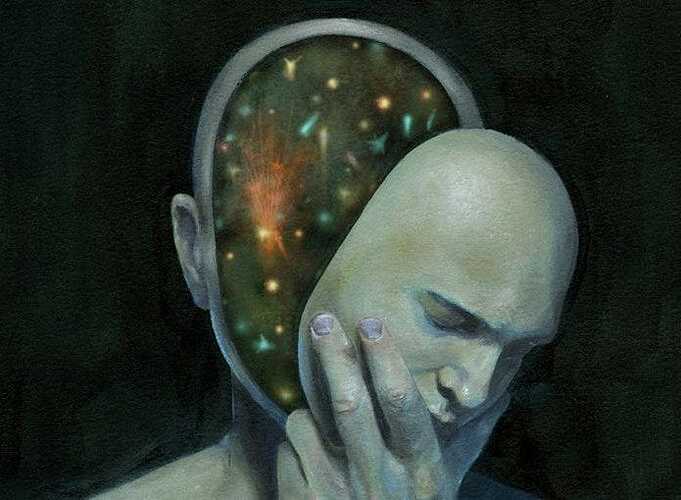Illumined’s Guide to Inquiry
I have been doing inquiry for a couple of years now, learning a lot from different sources but most importantly going through the work myself and seeing the results of doing this work. It can be a tool of great transformation of oneself and external reality. Here I will share some of the most important ideas and principles I have found to be beneficial throughout my journey.
Principle 1 - Life is meaningless
In the sense that it has no inherent meaning. As bleak as this may sound to some, it can equally be quite empowering. Events like blank canvases, await the strokes of our interpretations. It is our definitions and beliefs that wield the paintbrush, coloring and shaping our perception of the vast infinite potential around us. (To give an example, let’s say a person is standing on the edge of a tall cliff. A person expressing the belief that it’s incredibly dangerous and they could die may have a fear response compared to a person who holds the perspective of awe towards the majesty of nature. Same event or circumstance, different definitions resulting in a totally different experience)

Principle 2 - Motivation Mechanism
You will always immediately move in the direction of what you define or perceive to be more pleasurable. You will always move away from what you perceive to be more painful. You are always motivated by the same mechanism to do what it is you do. The key is what you define and believe & perceive to be pleasure and pain. When you attach certain kinds of beliefs to your motivational mechanism then you are automatically/immediately propelled in the direction of reinforcing that belief.
You can intellectually recognize what you prefer but don’t understand why you don’t always choose it or act on it. This comes down to the motivational mechanism and recognizing that if you had a positive belief system attached to that so-called preference you would automatically choose it, and if you are not choosing it, if you are not behaving or acting the way you prefer, what it immediately tells you without exception is there must be a negative belief attached to your actual preference that makes you see it in a light that makes it not something you actually prefer to choose.
It’s important to find out what belief you’ve attached to your so called dream/preference that makes it seem to be anything but your preference and once you find out what belief that is that you attached to that preference you will know immediately why you aren’t.
Many people will remain in a painful state over the state they say they prefer to choose because of the belief systems they have attached to the thing they say is representative of their passion. Which then makes their passion seem more painful of a choice than the pain they are already choosing. Many times it’s as simple as the fear of the unknown. Not wanting to move forward in a direction that’s unfamiliar to you and staying with the pain just because of the idea of the pain being familiar makes it seem as if that familiarity of pain is preferable to the idea of the fear of the unknown and therefore you remain in the pain as painful as it is just because it’s something that you known as opposed to something that you don’t if you have a belief that says the unknown is to be feared.
It takes willingness to explore why you have those beliefs and why you have attached them to that motivational mechanism and why you have attached them to your preference in that manner.
On Beliefs
As a result of living in the present, it will be easier to discern which beliefs are in or out of alignment with your “core” frequency and thus, it will also be easier to let go of limiting beliefs that are negative in nature. Releasing such beliefs becomes easier because they will appear so incompatible with a person’s higher vibrational state that it will simply make no sense to hold onto them anymore.
Should a certain negative belief persist in revealing itself via a person’s emotions, thoughts and behaviors, even after that person declares they’ve released it, then that’s a clear indication that, while they may have let go of a secondary or minor negative belief, they still haven’t found the fundamental one. When a core negative belief is truly released, the proof is that its effects no longer appear in a person’s feelings, thought patterns or behavior. If this is the case for you, you can ask yourself "Why? Why would i hold onto something I know is out of alignment and illogical and makes no sense for who i know i truly am?
To give an analogy in terms of building a house: (From Bashar)
Thought patterns are the building materials. Behavior is the construction method. Experience is living in the “house” that results from all of the above. A definition is like a blueprint for your “house” (your physical reality experience). A belief is the certainty that the blueprint is accurate (true). Emotions are the builders of the house. Thought patterns are the building materials. Behavior is the construction method. Experience is living in the “house” that results from all of the above.”
This is why experience, behavior, thoughts and emotions cannot exist in a “vacuum,” or appear out of the blue for no reason. Belief in a definition must come first, just like the blueprint for building a house, even if that “blueprint” is only in your mind.
However, if the blueprint is “out of alignment” with the original vision, then the emotions (builders), thoughts (building materials) and behavior (building method) will be unable to construct a stable house. If the misalignment is large, the house may collapse in the slightest breeze.
Knowing and understanding this structure and process ensures that your house will be strong and capable of “weathering” anything that may blow its way. This is because when a person notices their own negative behavior, thoughts or emotions, they can trace them backward to discover the belief and definition that’s generating those expressions.
An honest answer to the following question is all that’s required to discover the negative belief: “What would I have to believe is true about myself in the present situation in order to “(feel, think, behave) the way I do?”
If you are willing to find the answer, it will reveal itself in one of a number of ways: either there may be an immediate realization, or synchronicity will reveal the definition, or it may even come to light in a dream. In any case, changing what you define and believe to be true about yourself is one of the most powerful ways of releasing the limitations in your life that hold you back from being your true self.

